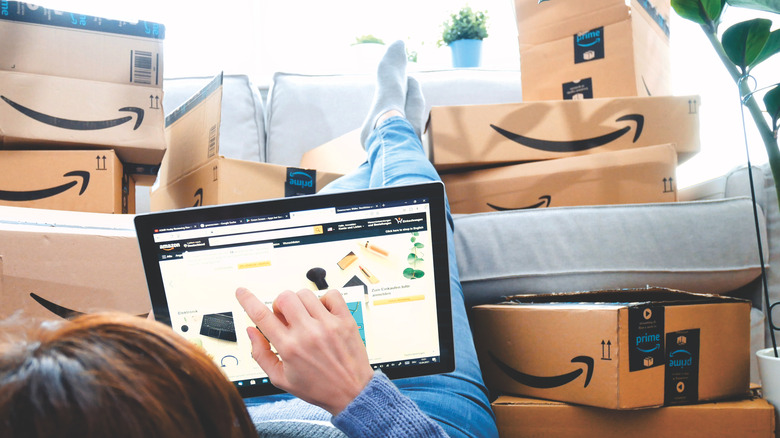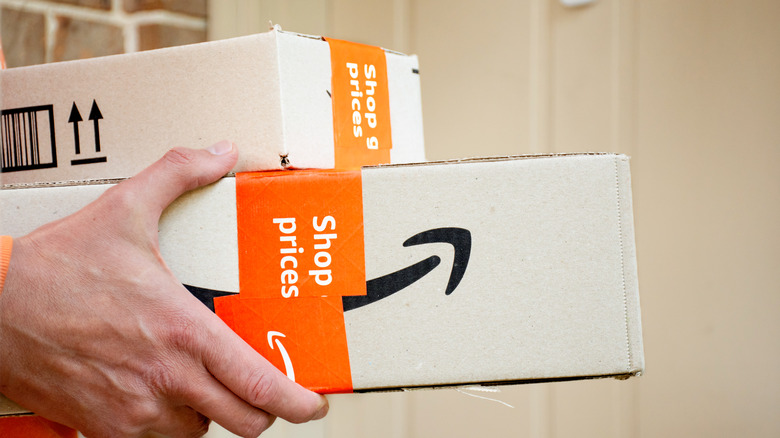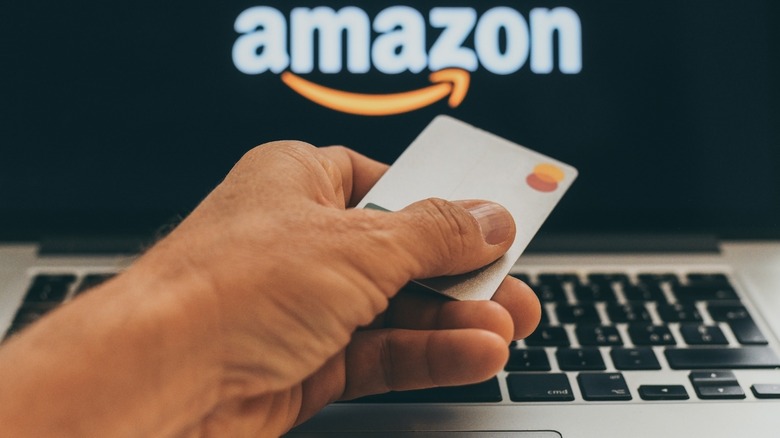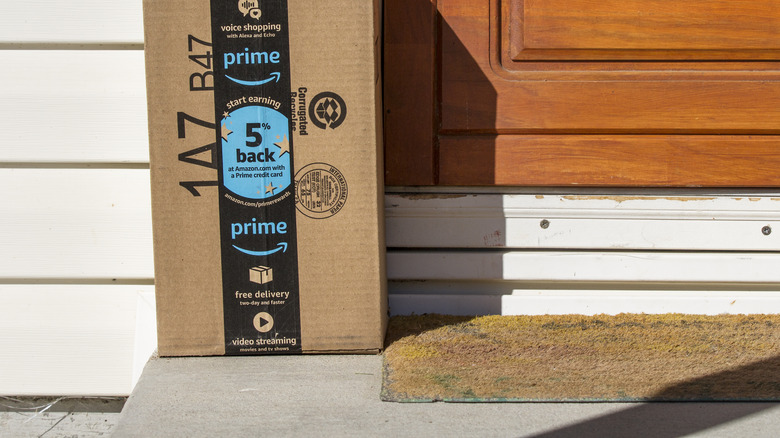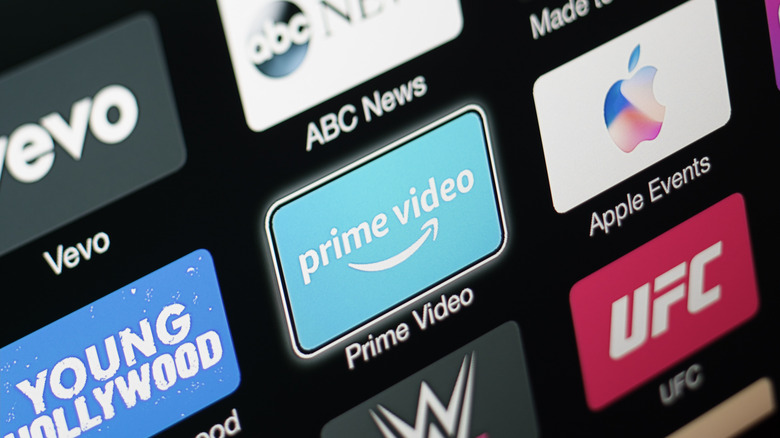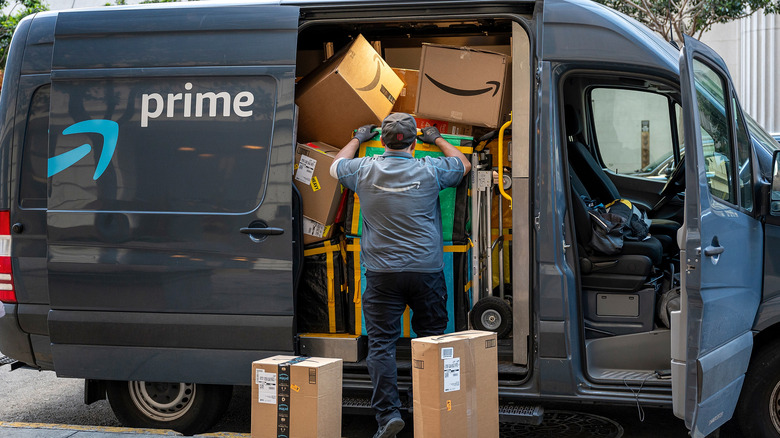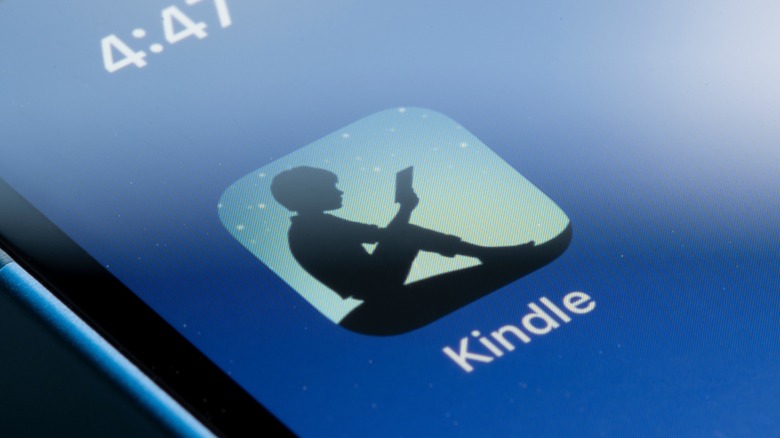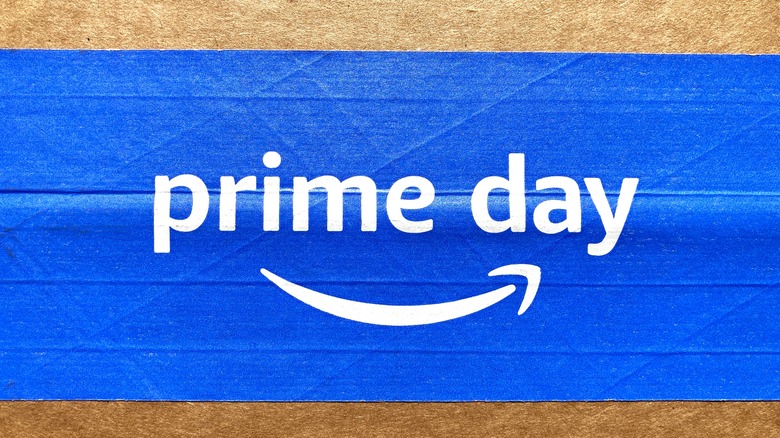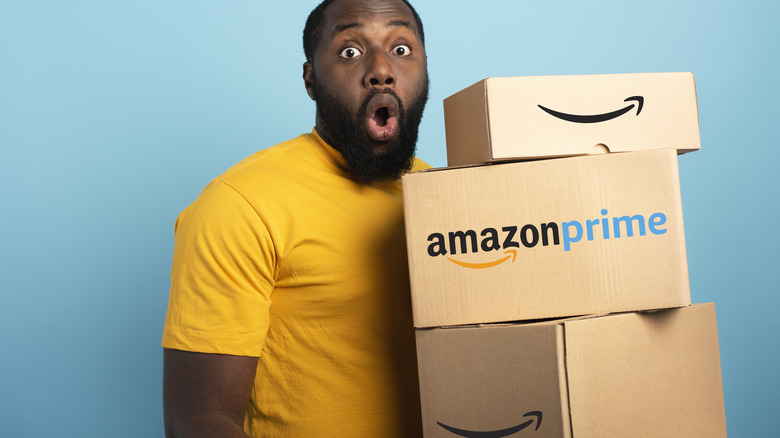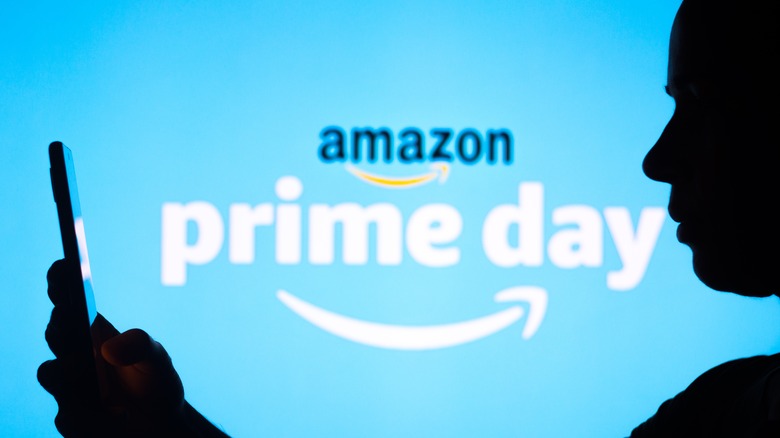Sneaky Ways Amazon Tricks You Into Spending More Money
Amazon is only the second company in history to reach a market capitalization of over $1 trillion (alongside Apple). The brand has become a staple of online shopping for consumers across the globe and around 200 million people worldwide subscribe to its Prime membership. From humble beginnings selling its first book in 1995 to the present, Amazon has been a pioneer in the eCommerce space. From one- and two-day delivery promises to talks of future deliveries assisted by drone technology, there's a lot of buzz surrounding the digital titan.
But with all this excitement and the rapid pace of deliveries of everything from toilet paper to power tools, Amazon has had to innovate in some more "enterprising" ways. Not only is the company amazingly efficient at bringing customers closer to the things they're looking for, but the brand has become exceedingly adept at parting buyers with more money than they might have hoped. Amazon relies on a bevy of sneaky tricks to create ever-increasing profits while enticing buyers to spend more and more money on the site. These are some of the brand's most effective tricks for creating increased spending habits among its customers. Watch out for these in your own Amazon browsing experience and you may be able to turn the scales a little more in your favor.
Amazon Prime
Prime members spend more at Amazon than those who don't take advantage of its Prime services. The difference in spending level is more than double, with Amazon Prime members spending roughly $1,400 per year and others forking over around $600 to the eCommerce giant, on average. Prime membership costs $14.99 per month, adding to the overall expense of using the platform. But membership costs aren't where Amazon makes its killing. Amazon's sales strategy revolves around bringing customers into what is colloquially referred to as the "Amazon Ecosystem." As a prime subscriber, you have access to a wide range of additional services on the platform, not just free and fast shipping. The Prime subscriber model gives Amazon the ability to reach customers directly for a variety of other money-making opportunities.
There are around 200 million Amazon Prime subscribers around the world, so it's clear that this subscription model is eminently important to the brand. Moreover, there's a reason why Amazon trades shipping costs for this monthly subscription service. Even if you routinely buy from Amazon in single purchases, a customer's value is augmented tremendously by becoming a subscriber, even if Amazon takes a hit on shipping costs.
One-click purchasing
One-click purchasing makes buying all sorts of goods on Amazon as simple as possible. This is a process pioneered by the brand, and Amazon even held a patent on this digital sales technology until it expired in 2017. One-click purchases make spending money easier and activates impulse buying in a way that wasn't previously possible in the digital space. The one-click purchasing option means you can log into Amazon and tap a single button to charge your card and have an individual item sent to your home, sometimes even the same day. The quick gratification from this type of purchasing is virtually unmatched, but it can also make it far easier to rack up a considerable amount of spending without fully understanding the cost.
Purchasing via the one-click method means that you won't be taken through to a checkout screen that shows the total for your purchase. Instead, you'll be charged whatever is on the product page and allowed to continue shopping essentially without interruption. A couple of one-click purchases later, and it's possible to rack up quite the expense in single transactions around the site. At its core, impulse buying relies on consumers' general lack of awareness around the added expense. One-click purchases are therefore the perfect tool for increasing profits and parting buyers with more of their money.
Amazon credit card offers
The online retailer has begun to routinely offer credit card accounts to its users. With an Amazon credit card, you may be able to take advantage of a unique and highly beneficial set of Amazon-based rewards. Amazon credit cards offer 5% back (or 3%) on purchases made on the site and other reward tiers for other kinds of spending and at least 1% back on all purchases. Points can be redeemed on Amazon or through Chase rewards avenues with 100 points equaling $1. This rewards program can seem enticing to those who routinely use Amazon for everyday purchases.
But, as is the case with many rewards and cash-back credit card offers, Amazon's finance products are designed to entice users to spend more than they otherwise would. Specifically, Amazon-branded credit cards naturally drive up sales on the Amazon platform. A trickle of rewards points can seem like a big deal to customers who often use the service, but cardholders can quickly find themselves in a hole from overspending that negates any benefit that the rewards points might have offered.
Amazon is the king of upselling
Amazon has truly innovated at the age-old art of upselling. The company has invested ample time and resources into algorithms and other automated processes that evaluate individual customer habits as well as those corresponding with specific product listings. Amazon has become incredibly adept at using customer search data and purchasing history to understand the other types of products that a customer might want to buy.
This comes in the form of recommendations and alternatives that are often found midway down the page on every product listing. Whether it be a book or an article of clothing, Amazon is quick to recommend both sponsored listings related to the product and other options that buyers commonly add to their cart or view either alongside the particular product you're looking at or as a substitute. Placing individualized ads in front of shoppers is a proven formula for success. The company notes that 35% of its revenue comes from this strategy of cross-selling.
Prime Video is a gateway to additional spending
Prime Video is a service that's included with your regular Amazon Prime membership. The video streaming service comes with a laundry list of included titles, with some Amazon originals brought into the mix as well. Prime Video acts as a selling point for the Amazon Prime subscription service and helps sweeten the pot for anyone who might be on the fence about adding this cost to their monthly bills.
The video service also subtly acts as yet another money-making avenue for Amazon. Mixed in with included media is a large library of content that you can only watch if you buy or rent the selected title. Moreover, it isn't always clear whether a TV series or movie is included or comes at an additional cost when casually scrolling through the Prime Video library. Once you've clicked on something to watch, you may be met with a purchasing requirement to actually view it. Similarly, Amazon offers subscription channels built into the video platform. All of these paid content additions boost Amazon's bottom line as people across the country opt to pay the upcharge to watch the newest season of their favorite show or stream a movie that it has just been released.
The social proof approach
Amazon is often quick to note how much stock of an item is left on its product pages. Buyers looking for any kind of good can expect to occasionally see these messages noting a limited remaining stock. Sometimes these notes say that more is on the way and other times they offer a bleaker outlook, suggesting that it could be quite a while before more inventory is procured.
Occasionally, shoppers have noted that these limited stock notices don't change when an item is purchased. This means that you can't always trust that Amazon is running out of something you're interested in. Still, the social proof sales tactic is one that's proven to work, creating a heightened sense of scarcity, regardless of whether that limited availability is true or false. This is a common practice in the airline industry as well, so it should come as no surprise that money-making machines across industrial sectors showcase the tactic.
Time limits for bundles and fast shipping
Similar to the limited stock messages that can sometimes be seen on Amazon pages, when customers search for goods they'll often be met with a timeline for the current delivery window. Amazon shoppers will be familiar with this countdown that suggests how long they have left to receive the item within the one- or two-day delivery window. Often, once midnight hits delivery will take place another day later. However, this isn't always the case and Amazon is quick to showcase a variety of different countdown functions that speed along a buyer's decision to purchase something.
In the same realm as delivery window timelines, Amazon products often find themselves advertised in bundle deals or with additional coupon offers. These too tend to be featured with countdown timers aimed at making a buyer pull the trigger on their purchase. Indeed, much of the marketplace experience on Amazon's website and app infrastructure is geared toward creating the quickest possible turnaround between searching and spending. These countdown timers are yet another tactic that has been shown to induce higher sales rates and boost profits.
Additional subscription services
The Amazon ecosystem is rife with additional subscription service options. From premium music streaming tools to video channel add-ons and subscribe and save deals on regular purchases, Amazon users have all kinds of opportunities to pay even more to the eCommerce giant for a variety of conveniences and services. It's worth noting that many of these subscription additions come as augmentations within the Amazon Prime infrastructure rather than separate from it. For instance, you can purchase a one-click button that connects via Wi-Fi and allows you to buy more of something with a physical press of the device (shipping in rapid time as a result of Prime membership status). Many of these buttons correspond with general household perishable goods like toilet paper and dishwasher tablets. To take advantage of the even easier one-click purchasing power you'll need to buy the button.
Furthermore, many subscribers simply forget to cancel the service after they stop using it or before the free trial expires. Many Amazon users love the idea of the brand's Audible service or its Kindle Unlimited offer. But reading is a habit that requires sustained effort and free time. It's easy to fall out of sync with a desire to read, leaving a subscriber potentially paying for a service they'd love to use but rarely (or never) take advantage of. Many other subscription service additions end up experiencing the same fate, improving Amazon's bottom line while charging customers for something they aren't using.
Flash deals and other limited promotions
Amazon routinely changes prices on its items, with automated price fluctuations taking place once every 10 minutes and resulting in 2.5 million price changes per day across its site, on average. On occasion, these price changes correspond with flash sales and other short-term promotions that add a countdown timer and sometimes even come equipped with a remaining stock figure or percentage bar.
There are two things to keep in mind here when approaching a flash deal or any other sort of limited run on a promotion. First of all, an advertised sale doesn't always correspond with an item's lowest recent price, or even necessarily a reduction off of the pre-sale price. Sites like camelcamelcamel can help Amazon shoppers determine recent pricing trends on all kinds of Amazon goods. Before considering the purchase of an item included in one of the brand's flash deals, explore its pricing history on a third-party website to make sense of whether you'll actually be getting a good bargain as part of the sale. Similarly, as with many other marketing tricks deployed by Amazon, the countdown bar for any other indicator of a deal's limited-time offer only acts as an artificial means to introduce new haste among buyers. Keeping these two features in mind can help you avoid getting suckered when making your next Amazon purchase.
A $25 minimum for free shipping (when buying without Prime)
Prime members aren't the only Amazon users who can take advantage of free shipping. Amazon also offers free shipping on purchases that meet a $25 threshold. This is a common tactic used by eCommerce retailers across the board. Many digital sales channels will offer free shipping and strategically position that threshold at a level that's difficult or impossible to meet right on the nose. The tactic induces overspending regardless of where it's deployed because many shoppers will only be looking to purchase one thing and opt to include additional items to psychologically remove the added expense of shipping while ultimately parting with even more of their money.
Amazon doesn't suffer from this same potential pitfall, and it's often easy to find low-priced goods to help make up the difference and only overspend by a small margin. Even so, Amazon shoppers who don't pay for Prime membership will often find themselves buying more things than they wanted or needed to hit this "cost-saving" threshold. To make the most of your Amazon spending when dealing with shipping costs, it may be beneficial to identify certain household items that you'll always use to add just enough to reduce the shipping charge. Things like soap or shampoo, toothpaste, or hobby necessities like guitar picks, golf tees, or even batteries can act as a quality fill-in.
Prime Day, a shopping event marked by lengthy brand saturation
Ahead of Amazon Prime Day sales, the eCommerce giant goes all in on marketing and advertising. For weeks leading up to sale events created by Amazon, the app and website are both inundated with ads for potential savings opportunities when the sale finally arrives. The purpose of this lengthy onslaught of advertisements is to artificially inflate a sense of excitement about the event. Regardless of whether sale prices actually drop to new lows or allow for vastly increased buying power with bundled deals, shoppers who frequent Amazon are filled with a fear of missing out when the calendar finally ticks over to the anointed sale period.
The idea here is to inflate shoppers' desire for all kinds of goods that can be found on Amazon's digital storefront. Many people routinely browse Amazon's catalog of goods for discounts and savings opportunities, but these shopping windows are geared toward more casual users. The objective is to draw in buyers who wouldn't normally take advantage of sales windows. The fear of missing a savings opportunity is a potent emotional response and this is something that Amazon works diligently to foster and then cash in on with events like Prime Day, Cyber Monday, and other yearly online shopping 'seasons' that feature prominently in its advertising efforts both on the platform and beyond it.
